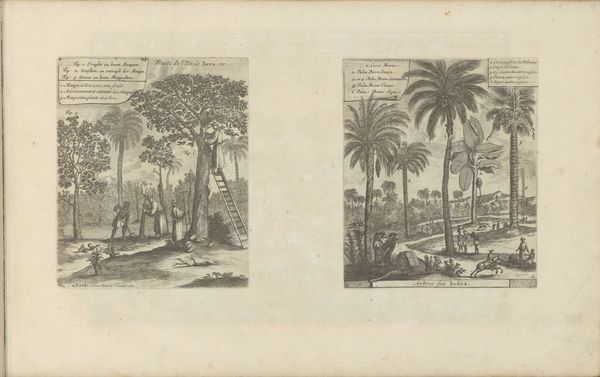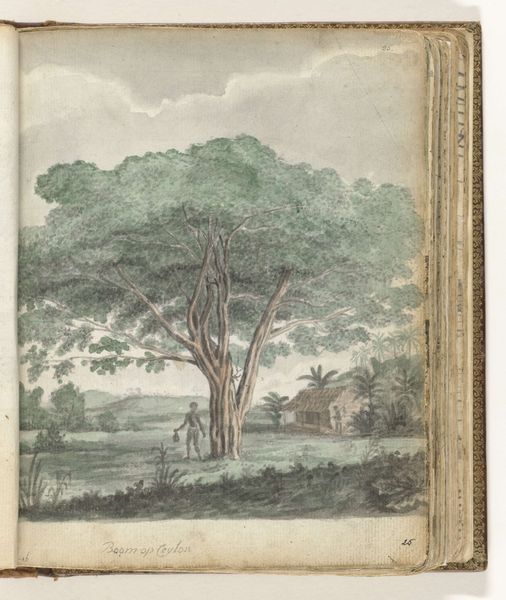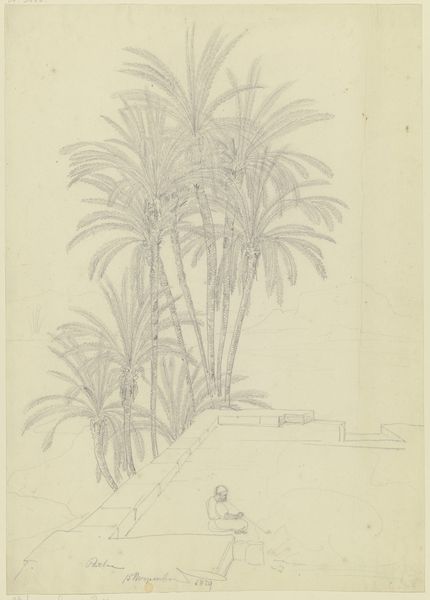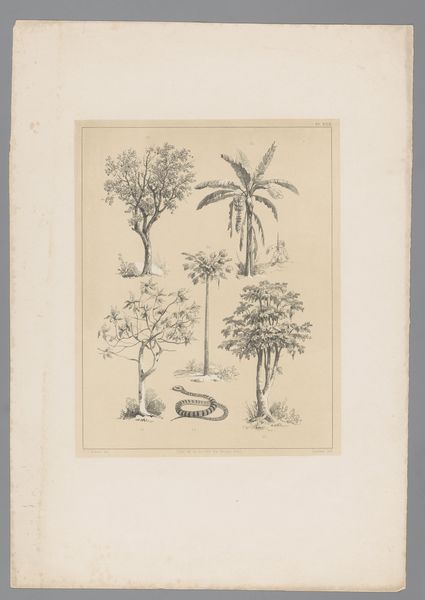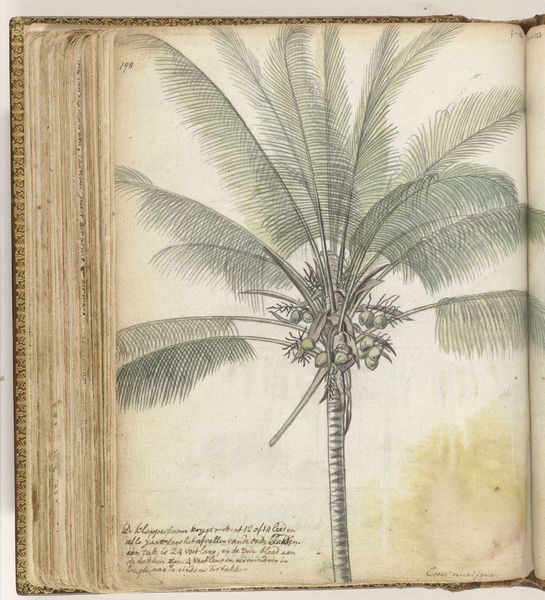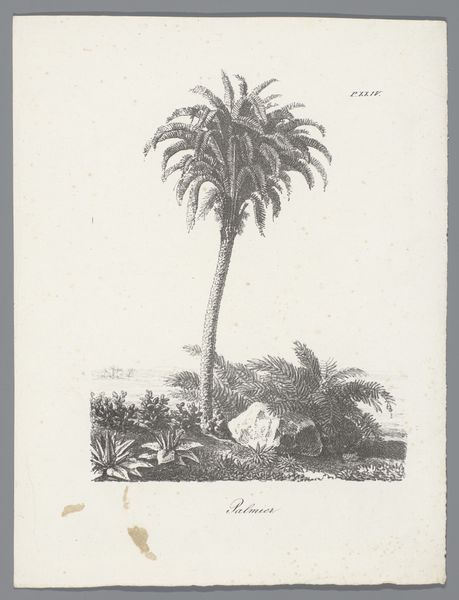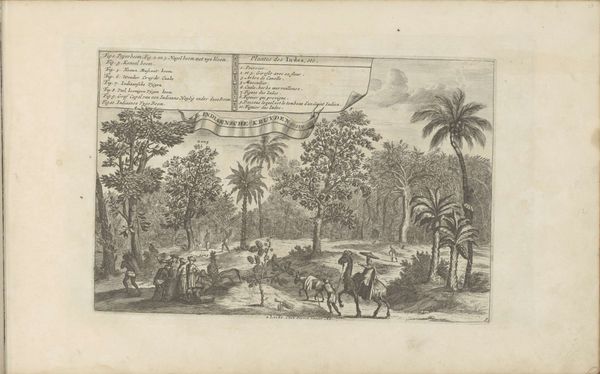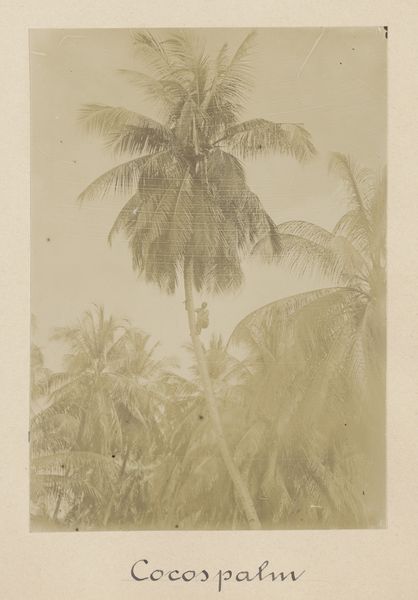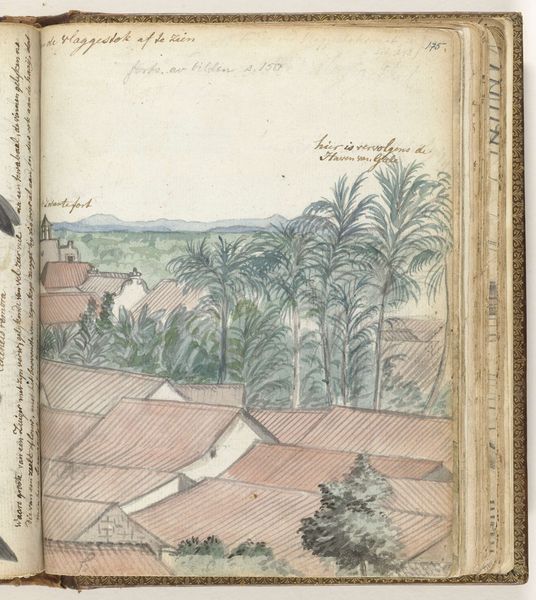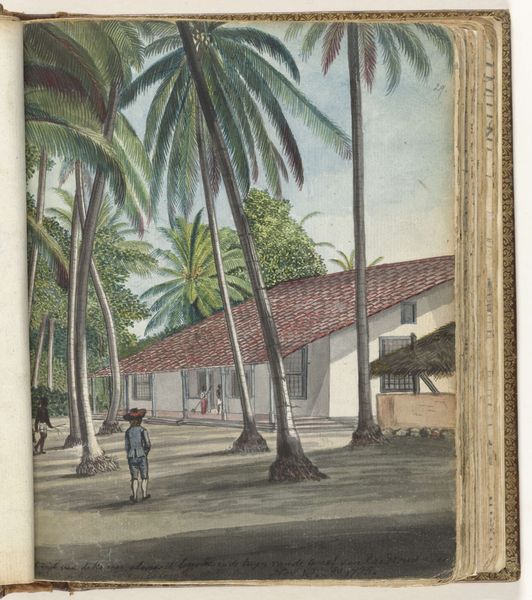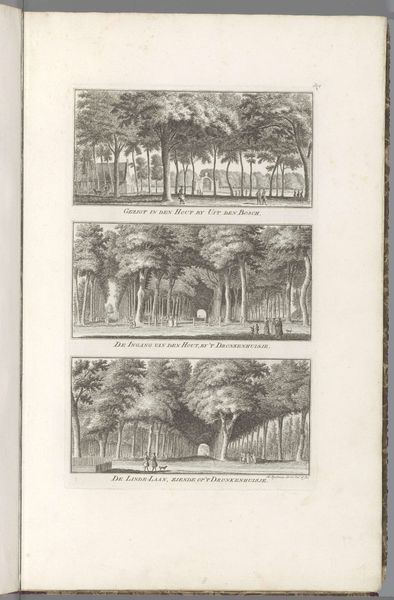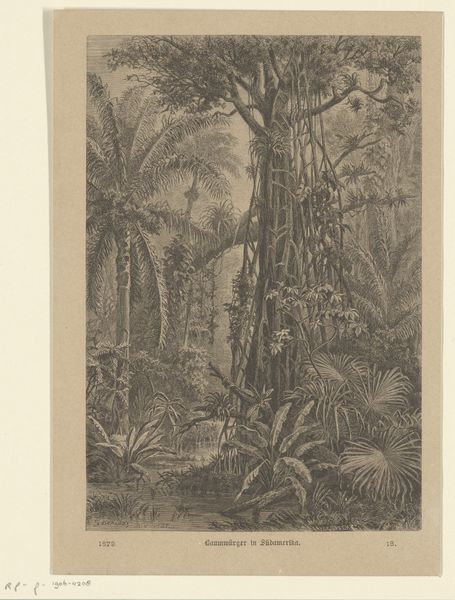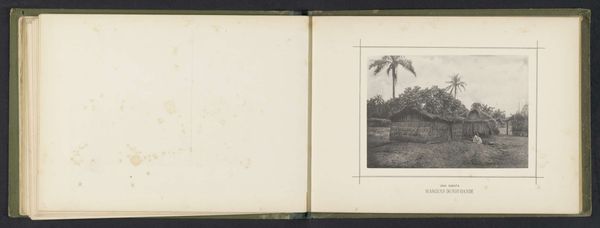
drawing, coloured-pencil, paper, watercolor
#
drawing
#
coloured-pencil
#
landscape
#
paper
#
watercolor
#
coloured pencil
#
watercolor
Dimensions: height 195 mm, width 155 mm
Copyright: Rijks Museum: Open Domain
Editor: Here we have Jan Brandes' "Gezicht uit het venster," possibly from between 1779 and 1788, made with watercolor and colored pencil on paper. It's like gazing into another world; a vivid landscape jumps off the page! How do you interpret this work? Curator: What I see is a fascinating depiction of exoticism filtered through a European lens. These palms, rendered so meticulously, speak of trade routes and colonial encounters, of a yearning for the faraway. Do you notice how the composition is organized? Editor: Yes, the layering is quite striking, with the clear sky, then the dominant palms, and the dense vegetation below. Curator: Exactly! These levels evoke the traditional structuring of landscape painting, but here, it’s applied to a foreign land. Notice, also, how the trees are presented almost as specimens. They aren’t simply trees; they are symbols of a place. What emotions do those symbols stir? Editor: Well, it definitely sparks curiosity, but also, perhaps a slight sense of distance. It feels like observing rather than truly experiencing. Curator: Precisely! It reflects the psychological distance between the artist and the subject. Brandes is recording, but also perhaps, claiming. These visual symbols help construct an understanding—or perhaps a misunderstanding—of a different reality. It reflects both wonder and a desire for control. Editor: I never considered that it was as much about claiming as it was about observing. It definitely sheds new light on the piece. Curator: The power of symbols is remarkable isn’t it? It allows the artist to transpose not only visual aspects but also political and emotional concepts into the picture. It allows one to understand, centuries later, an array of colonialist desires and expectations. Editor: Absolutely. I'll never look at a landscape the same way again!
Comments
No comments
Be the first to comment and join the conversation on the ultimate creative platform.

